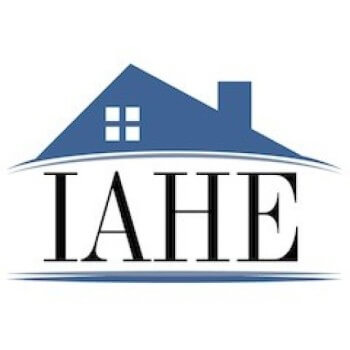Throwback Thursday • May 15,1972 • #IAHEtbt
Educational freedoms Esther – a Lutheran minister by the name of William Lindholm
Every good Christian homeschooled child knows the story of Esther. How she risked everything to save the Jews from certain annihilation at the hands of Haman. Esther was called to stand in the gap for the Jewish people by her cousin and guardian Mordecai with the exhortation “who knows whether you have not attained royalty for such a time as this?” Esther 4:14.
For the Amish, Mennonite and all Christian parents who wanted to direct their children’s education, their Esther was a humble Lutheran pastor from the little town of Livovia in southern Michigan. Rev. William Lindholm grew up in Iowa and ministered in southern Michigan, always near several Amish and Mennonite communities. In the late 60s, state education authorities were using the compulsory attendance laws to force Amish and Mennonite children into attending publicly run schools to protect children from “ignorance” and prepare them for citizenship. Lindholm was jolted into action by heart-wrenching photographs of terrified Amish children running from truancy officers to hide in cornfields and barns. In 1967, he helped found The National Committee for Amish Religious Freedom.
At the same time, the Amish in Green County, Wisconsin decided to start their own school hoping to defend against the attacks on their religious freedom by public school officials. The local superintendent, seeing a loss of revenue for his public school, responded quickly by charging two Amish parents and one Mennonite parent, one of whom was Jonas Yoder, with violation of the state’s compulsory attendance law. The Amish typically don’t use the legal system to defend themselves, but Lindholm soon found out about the case and immediately started to put together resources to defend the right of these families to educate their children at home.
Part of the old order Amish culture was to have the children attend a more traditional school setting until age 14. After age 14, the Amish provided purposeful training in farming and domestic life essential for their community’s survival. This method of education has been quite successful in preserving their culture for centuries. It was the parents of these 14 and 15-year-olds that the education establishment targeted for prosecution because they were receiving no “formal education” while under this vocational tutelage of their parents. 
Lindholm was able to convince William B. Ball to take the case on behalf of the parents. Ball, a Catholic, was one of the nation’s prominent experts in church-state law. Ball wisely recognized that he would lose the case at the county court level and carefully established a trial record with testimony from national experts on the success of the Amish community to raise stable and productive children. With the cunning of a fox, he also carefully revealed the school officials’ bigotry and thirst for dollars. He also placed the county welfare director and sheriff on the stand to establish that these “dirty ignorant children” had never in the history of Green County applied for welfare benefits or committed a crime.
As suspected they lost at the trial court level but found surprising success in the Wisconsin Supreme Court. That Court found in the family’s favor based on the U.S. Constitution’s First Amendment right to freedom of religion. Because that ruling was based on the U.S. Constitution, the state’s Attorney General appealed to the U.S. Supreme Court which took up the case in 1972.
At that time the U.S. Supreme Court was in a period of transition where most legal experts were not clear on what direction the Court would take on religious liberty cases. It was then that President Nixon appointed Warren Berger as the chief justice because of Berger’s law and order reputation. A reputation that would come back to bite Richard Nixon when Berger would order that Nixon had to disclose the Watergate tapes that eventually lead to the president’s resignation.
Upon the completion of oral arguments in the Yoder case in front of the Supreme Court, a dejected Ball passed a note to his assistant with the words scrawled on it “we have LOST”. Fortunately for homeschooling freedom, Ball was a much better courtroom tactician than he was a judicial predictor. On a unanimous decision written by Chief Justice Warren Berger, the court upheld the Wisconsin Supreme Court’s decision that parents who have a sincerely held religious belief may not only direct the education of their children, but can even provide it. Berger, confronting the state’s main argument that the students would be left in ignorance without the state certified education, stated:
“. . . this argument of the state appears to rest primarily on state’s mistaken assumption . . . that the Amish do not provide any education for their children beyond the eighth grade, but allow them to grow in “ignorance.” To the contrary, not only do the Amish accept the necessity for formal schooling through the eighth grade, but continue to provide what has been characterized by the undisputed testimony of expert educators as an “ideal” vocational education for their children in the adolescent years.”
Perhaps what Ball didn’t know about Chief Justice Burger may have given him a hint of Berger’s thoughts on home education. Burger was born in St. Paul, Minnesota to a family who put great value in learning that began at home. While in fourth grade young Burger became ill and was forced to miss the full year of “formal” school. It was during this time away from the certified public school that he first fell in love with reading law books. He also ate up biographies of great American historical figures during his missed year of formal education. Of course, many of those historical figures were also home educated like Washington and Lincoln. 
The education establishment tried to give the Yoder case a very narrow interpretation as just an Amish exception to the compulsory attendance law. Nonetheless, after years of diligent effort by Christian homeschooling pioneers, the principles laid out in Yoder and a previous decision in Pierce v. Society of Sisters established that the right to home educate did emanate from the Constitution’s first, fourth and 14th amendments.
Unfortunately, this right of parents to direct the education of their children is not an explicit right clearly articulated in our nation’s constitution. As our friends at ParentalRights.org and HSLDA have pointed out, this right of parents could easily be taken away by five Supreme Court Justices just as easy as it was given. Therefore, like Rev. Lindholm, it is our turn to stand in the gap for a time such as this by working for a constitutional amendment protecting parental rights and educational freedom. Learn more about the effort by going to ParentalRights.org.
John Tuma is a former member of the Minnesota Association of Christian Home Educators (MACHE) board. John’s career began as an attorney for a firm in the Northfield Minnesota area. In 1991, he opened his own solo practice and Wendy, his wife, stepped in to assist him. In 1994 John entered the political arena when he was elected State Representative for their district and served in office for four consecutive terms. As a Representative, John had the honor of chairing the Crime Prevention Committee and was one of the chief authors of the state’s terrorist bill which was developed as a result of the September 11th terrorist attack. In 2002, John made the choice to retire from his legislative position in order to spend more time with his family. It was then that John and Wendy started Tuma Consulting Corporation, a legislative consultant business. In 2015 the Governor of Minnesota appointed John to the Public Utilities Commission. John and Wendy have two grown children that they had homeschooled through high school.
